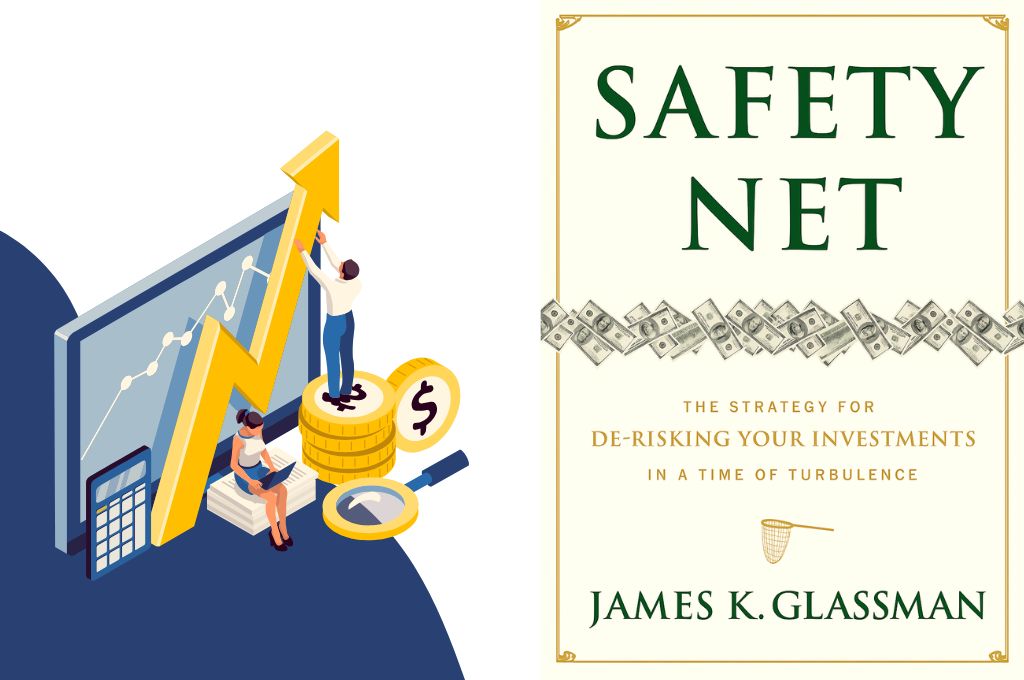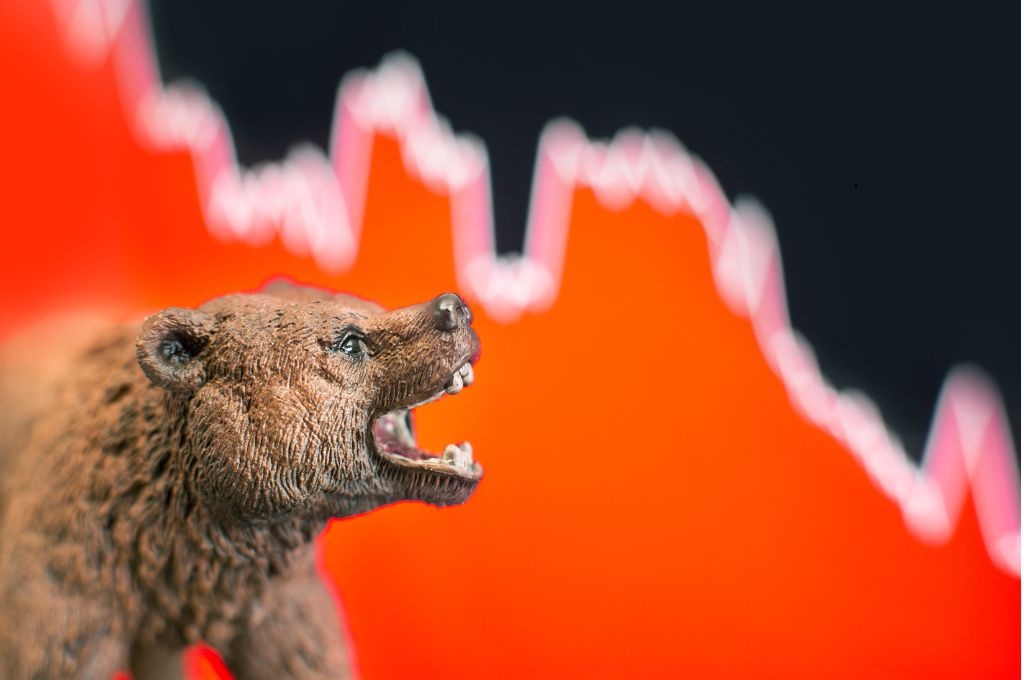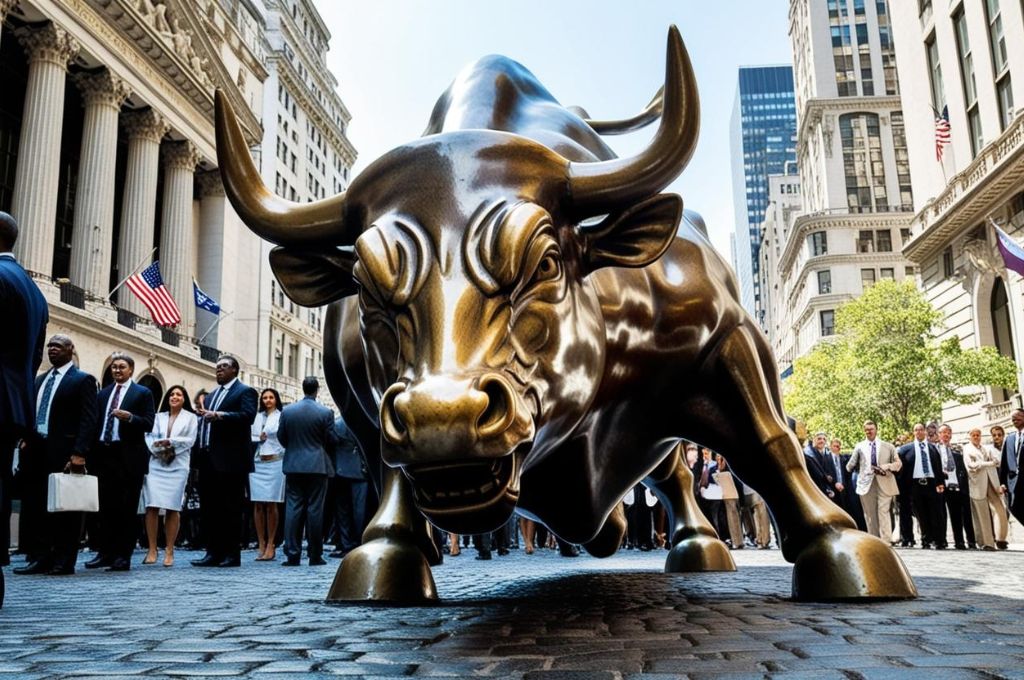Disclaimer: The information in this article is intended for informational purposes only and should not be taken as personal financial advice.
The bull market is in full swing, with US stock indices such as the S&P and QQQ hitting new all-time highs. For those who have been following my blog, you’ll know that my investment portfolio consists of a heavy allocation towards US tech stocks and a 10% cash holding. A relatively high-risk, high-reward portfolio.
While it is nice to see my account consistently on the rise, I do not want to get carried away by the sweet gains of the bull market. History has shown that the stock market moves in cycles and recessions are inevitable. If there is any time to de-risk a portfolio, my gut feeling is that it would be after a lengthy bull market run.
My goal with reading Safety Net: The Strategy for De-Risking Your Investments in a Time of Turbulence was to gain perspective from a cautious investor’s point of view.
Author Credibility
James K Glassman, the author of Safety Net, is a former US diplomat and financial columnist for The Washington Post. He has written three investment books over his career including Dow 36,000 (1999), The Secret Code of the Superior Investor (2002), and Safety Net (2011).
His professional background appears to be more in the investment journalism field rather than in the actual investment industry. Additionally, Glassman appears to have a history of flipping back and forth between investment strategies depending on the condition of the market.
Criticism of the author aside, I believe there is a lot of good information and perspective that we can take away from this book. Being an investor in the US stock market was no easy task at the time Safety Net was written in 2011. The decade preceding it from 2000-2010 had some of the worst yearly average returns the US stock market has ever seen and is commonly referred to as the ‘lost decade.’
Lessons from Safety Net
There are two main points in the book: 1) de-risking your investment portfolio and 2) diversifying your holdings.
De-Risking Your Investment Portfolio
The main thesis of the book revolves around switching your investment portfolio from the commonly used 90/10 allocation (90% stocks / 10% bonds) to a 50/50 allocation (50% stocks / 50% bonds). Glassman acknowledges that with this new 50/50 allocation, you will have to sacrifice some of your gains during a bull market. The sacrificial number he comes up with is -1.5% per year (Page 21 – Safety Net). So if a 90/10 portfolio typically returns 8.6% annually, then a 50/50 portfolio will return 7.1% annually.
Glassman argues that this sacrifice is actually a good deal for the trade off of having a less volatile portfolio. The losses you will receive, both financially and emotionally, during a deep bear market with a 90/10 portfolio will far outweigh the benefit of the additional 1.5% gain per year.
The book also addresses the need to consider black swan events that could tank the stock markets to lower lows than what we have ever seen before. Glassman stresses the point that past performance is not an indicator of future results, meaning that we could see market downswings worse than the great depression, dot-com bubble, or the global financial crisis. Therefore, we should prepare accordingly with the 50/50 investment allocation.
*Opinion*
I believe the 50/50 allocation may be more appropriate for investors who are either saving up cash for a major life event or those who are about to retire. As a younger investor with a longer investing time horizon ahead of me, I do not see the need to be this conservative.
If you are like me and have high-risk leveraged ETFs such as TQQQ or SPXL, then I believe it makes sense to consider increasing your cash/bond holding beyond the typical 10% allocation. I am currently considering increasing my cash holding to 20% of my portfolio.
Diversifying Your Holdings
The second point the book drives home is to diversify the types of stocks in your portfolio. Glassman recommends diversifying your stock portfolio into five main categories of stocks: 1) dividend stocks, 2) value stocks, 3) micro-caps, 4) stocks you have personal insight on within the business they do, and 5) international emerging markets.
Within these 5 stock categories your stock portfolio allocation should be as follow::
- Dividend stocks: 10-40%
- Value stocks: 10-40%
- Micro-caps: 10-40%
- Stocks you have personal insight on within the business they do: 10-20%
- International emerging markets: 20-40%
The book references a study from 2000 by economist John Campbell of Harvard indicating that your portfolio should include at least 50 stocks spread out among different sectors in order to achieve the same volatility as the overall market (Page 149 – Safety Net). So your entire stock portfolio should include at least 50 stocks spread out among the five categories listed above.
The reason for this vast diversification of stocks instead of simply investing in US index funds such as the S&P 500 or the Nasdaq 100, is due to Glassman’s prediction of slow growth in developed nations over the next decade. He argues that productivity and GDP will be lower in developed countries, such as the US, Europe, or Japan, due to lower birth rates, longer life spans, and earlier retirement. Therefore, there is a need to find value in international emerging markets (Ie. China and Latin America) and overlooked domestic companies (Ie. value stocks and micro-caps).
*Opinion*
I believe the author may be a little influenced by the poor performance of the US stock market over the decade preceding the writing of the book in 2011. If you had invested into the S&P during the top of the market in 2000, it would have taken you nearly 13 years to finally turn a profit. That’s a lot of patience required!
I agree with Glassman’s recommendation to diversify your stock portfolio. However, I am not a fan of choosing individual stocks like he recommends
Picking individual stocks successfully requires a decent understanding of what the company does and their financials. I believe that investing in an index fund is the best diversification you can get.
Glassman also states in his book that fund managers typically underperform index funds. Are we to assume that us retail investors will be able to outperform those fund managers? In my opinion, probably not. So while I agree with this thesis on the need to diversify and de-risk, I believe a lot of money will be lost if stock picks are left up to the individual investor.
How Does This Book Affect My Investments?
One excerpt from the book that really stood out to me is “The real danger of volatility is that your short-term losses become so psychologically unbearable that you dump your stocks at precisely the wrong time and miss the recovery.”
While I have not made any direct changes to my investment portfolio yet, I am strongly considering increasing my cash allocation from 10% to 20% to further de-risk my account. If we were to go into a deep recession and stocks ended up losing 80% of their value over the next few years, I know I would not feel great psychologically with just a 10% cash holding.
Final Thoughts
In hindsight, we have seen that his predictions have not been correct as the US stock market has exploded in value over the 14 years since the book’s writing. However, I do not want to be too critical of the book. As they say hindsight is 20/20.
If anything, I believe now would be the time to take his advice and de-risk our portfolios and increase investments in emerging markets outside of the US. Sure we have had pullbacks in the US market such as the 2020 covid crash or the 2022 inflation scare, but we have not seen a true deep recession in the US stock market since 2008. It’s easy to get carried away in the current bull market thinking that stocks will go up forever, but I am in full concurrence with the author when he indicates that recessions are bound to happen eventually.





